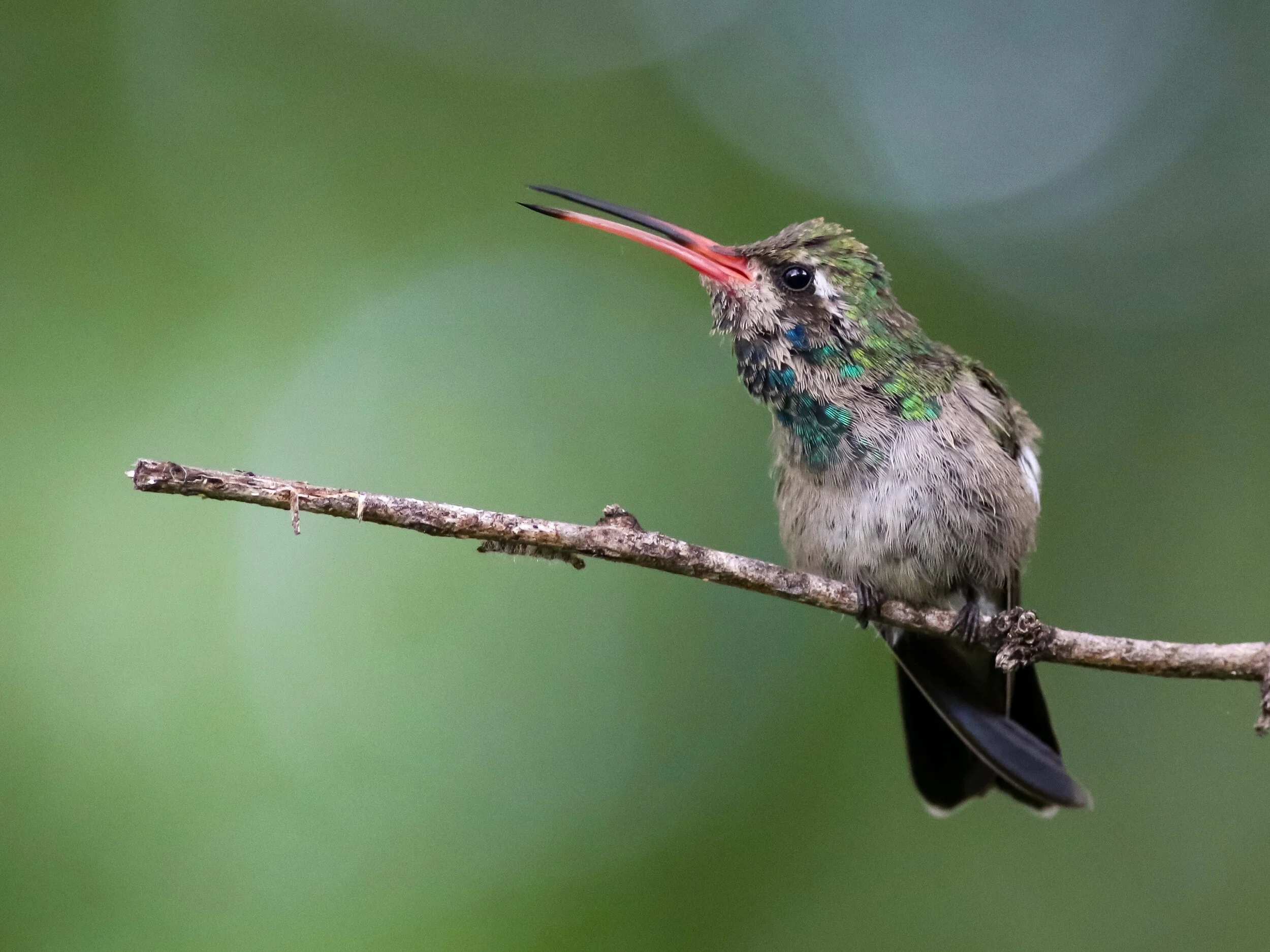Virginia’s Next Dozen
A Report by Matthew H. Anthony, Todd Michael Day, & Nicholas E. Newberry
Among some birders, rarities are a source of great fun and deep pondering. They provide fodder for endless discussions about where, when, and how a particular species may be found. They populate our eBird alerts, listservs, and social media posts. They even structure some of the most enjoyable social aspects of birding. How many of us can fondly recall the spontaneous reunions with birding friends that occurs at a particularly special chase? For many of us the camaraderie that we share at events like the Rarity Roundup highlights the birding calendar. As magical and exciting as our expected birds are, the prospect of a mega rarity lurking in the next tree over, or the next stop on the itinerary, or maybe tomorrow or the next day, can be a great motivating factor to get out there and bird.
Photo courtesy of Tom Johnson
Though at times they can feel completely random, a broader view can bring into focus the patterns behind many of the rarities we find. In some cases, we know these patterns well enough to predict (sometimes with startling accuracy) when and where to look for this or that species. This, too, is part of the fun of birding, and predicting correctly is quite gratifying. In that spirit, we bring to you this report on Virginia’s Next Dozen!
We asked birders from across the state to send us their predictions of which twelve species they think will constitute the next additions to the state list. The timing of this report was inspired by our neighbors to the north, who published the third edition of their excellent “Maryland’s Next 10” report earlier this summer. Previous reports in Virginia have been presented less formally in the VSO Newsletter and the va-bird listserv, most recently in 2009 and 2017, when Ned Brinkley offered impressively comprehensive assessments of Virginia’s next birds, correctly predicting about a quarter of the state’s new additions over the last eleven years. Our report has benefitted from both improved communication among birders and expanded interest in rarity-seeking, allowing us to poll a larger subset of Virginia’s birders and present a more collective summary of our birding community’s thoughts. For record-keeping purposes, we used the VARCOM list as the official standard. That list currently sits at an impressive total of 483 species, higher than most of our neighboring states and tying both North Carolina and New Jersey. With such a robust list, we have almost reached the point where the most obvious “expected” rarities are all behind us, and what remains reaches more and more into the realm of the improbable. Nonetheless, our 40 voters came up with a wonderful assortment of 76 species that they think have a shot at being recorded here in the Commonwealth! Remarkably, two have already happened between the time we put out a call for submissions and the completion of this report!
To assemble this list, we gave our respondents wide latitude to select the species they deemed most likely. We did not give any specific instructions on how to select species, other than providing directions regarding four specific species or species groups. We excluded European Storm-Petrel from consideration—although it is not yet on the official list—because we deemed a well-documented record from August 2020 likely to be accepted. Virginia also has three taxa on the state list which were not accepted to species level: Greater/Lesser Sand-Plover, Pacific-slope/Cordilleran Flycatcher, and Tropical/Couch’s Kingbird. In the case of the former two, there is consensus around identifications of Lesser Sand-Plover and Pacific-slope Flycatcher, respectively, so we excluded those species from consideration. There is no consensus on the Tropical/Couch’s, so we invited our voters to consider both species. Acknowledging that a fair percentage of new additions to the state list have been unexpected species (who would have predicted Lucy’s Warbler!), we also encouraged our voters to consider “longshot” picks.
When scoring the submissions, we awarded each species one point per vote. We also asked our voters to rank their top three picks, and calculated weighted point totals based on the results. In addition to receiving one point per vote, each species received an additional three points for a first-place vote, two points for a second-place vote, and one point for a third-place vote. We used the weighted totals when determining our final ranking, but we have presented both the weighted and raw totals in the table that follows. Additionally, we have also provided annotations on each of the species that received a vote. These range from brief to fairly extensive, and contain a summary of vagrancy patterns and occasionally some discussion of identification and potential locations for a vagrant to be found. When assembling these accounts, we relied most heavily on eBird data, and fully acknowledge that they may not be a comprehensive representation of records. Where possible, we included additional records that were known to us, but we did not make a dedicated effort to scour other sources and identify records that have been entered into eBird (who has the time for that!). That said, please feel free to contact us if you notice any glaring errors or omissions. We hope you find the material that follows interesting, edifying, and fun!








